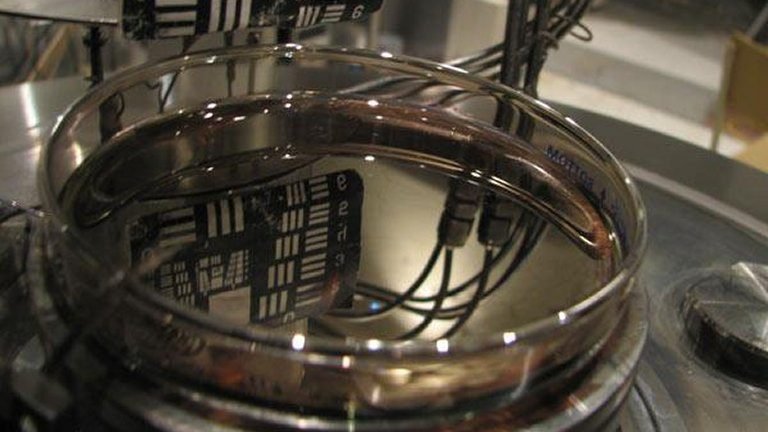This post’s subject is the liquid mirror telescope. The operation, advantages and disadvantages and, some projects are shown.
How does it work?
The primary mirror, which receives the light from space, is made of liquid mercury in rotation at constant speed, by an electric motor. The gravity pulls the liquid down and the inertia force, or centrifugal force, pulls some of the liquid to the sides. The liquid forms a perfect parabola that focuses light on a secondary mirror or in a CCD camera.
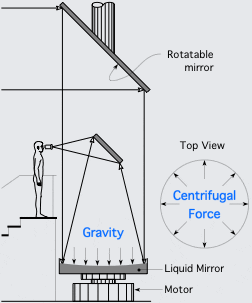
The liquid floats in a very thin compressed air layer, to eliminate friction.
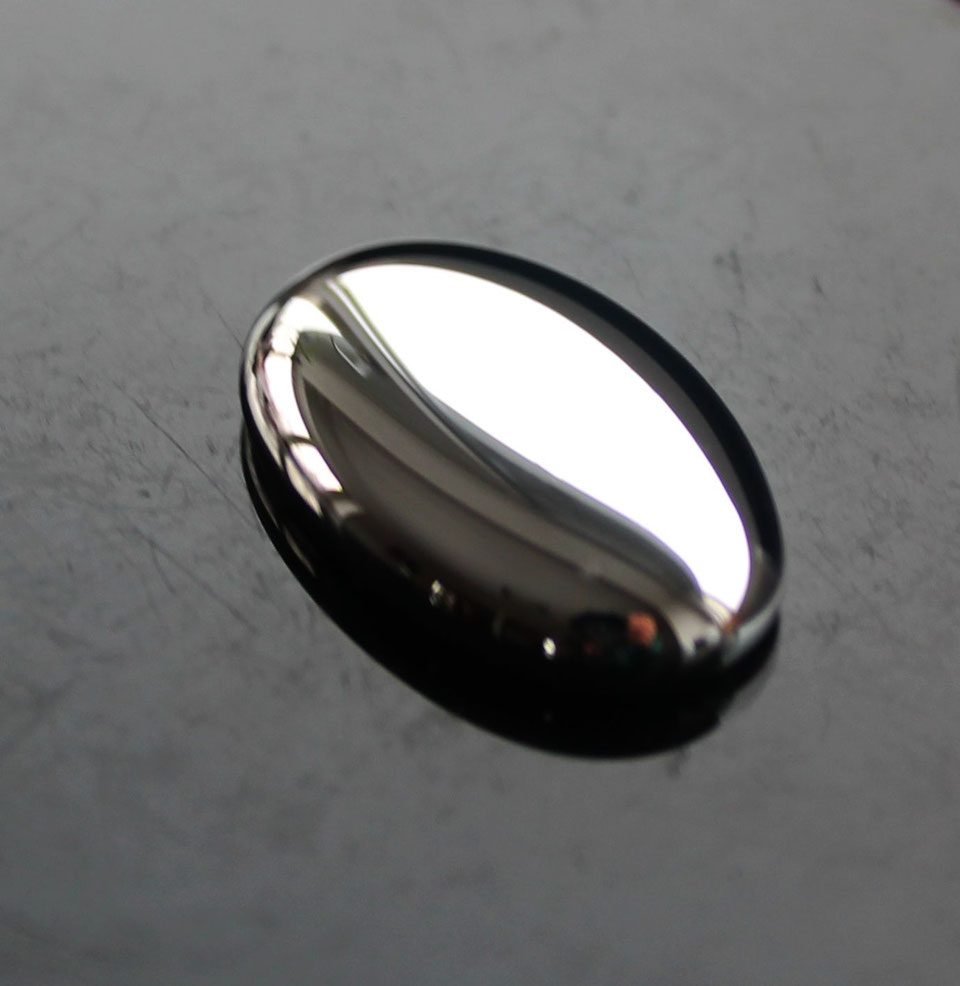
Vantages and disadvantages
The advantages of liquid mirror telescope:
- The liquid mercury is much cheaper than a solid mirror with aluminum coating of the same diameter.
- The liquid mirror’s focal distance can be changed controlling the speed rotation.
- A solid mirror needs to be manufactured and polish with extremely precision, if the mirror curvature is out by a fraction of a strand of hair’s width, images will be blurred.
The disadvantages are:
- The field vision is much smaller, the liquid mirror telescope is pointed only to a small part on space.
- Can’t be pointed to other direction.
- The mirror can’t be bigger than 8 meters in diameter, because the Coriolis effect will deform it.
The biggest liquid mirror telescope in the world
It’s the International Liquid Mirror Telescope (ILMT), on Devasthal observatory, at 2450 meters (8038 feet) of altitude, on Indian Himalaya. Has 4 meters of diameter and 50 liters of mercury above 10 microns of compressed air.
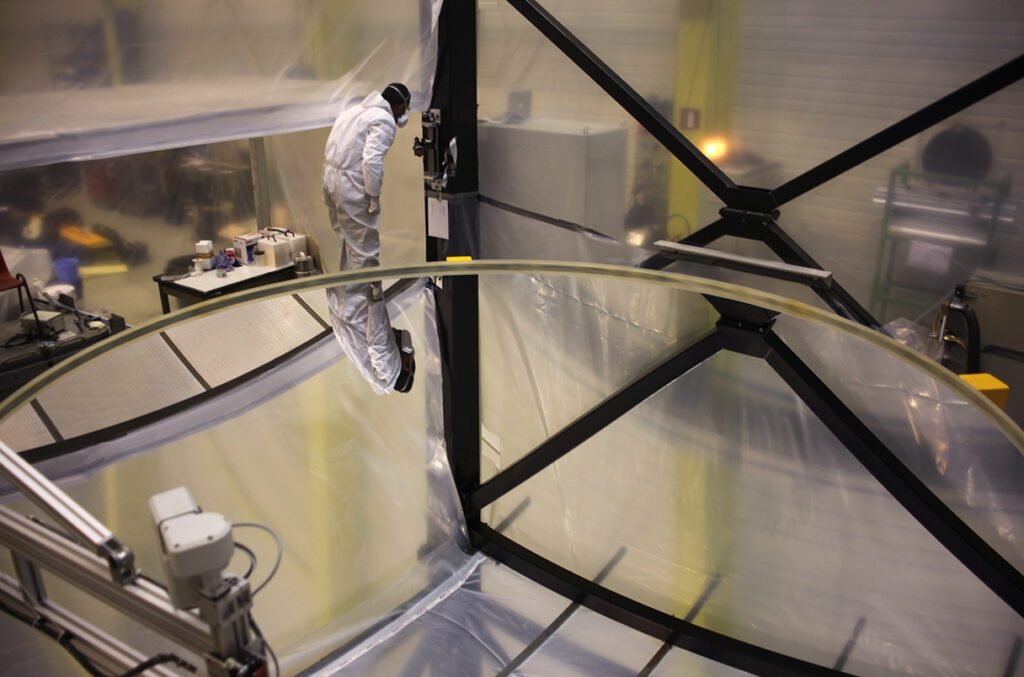
The project of liquid mirror telescope on Moon
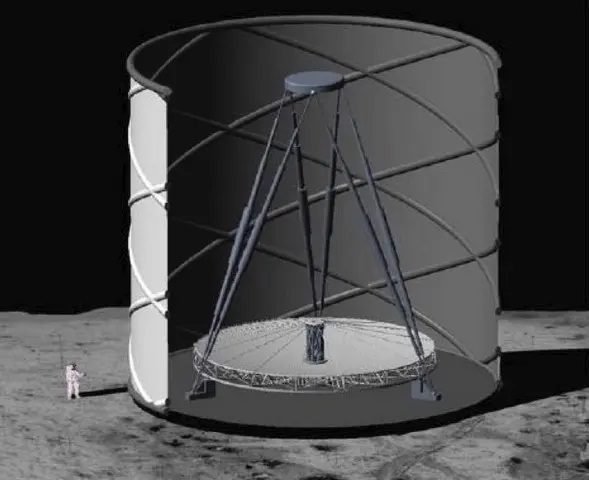
This is a NASA project, to put a 100 meters liquid mirror telescope in a crater on one of the Moon’s poles. The natural satellite doesn’t have an atmosphere and rotation is much slower. Therefore, it’s possible to build bigger liquid mirrors. The telescope would be remotely operated and powered by solar panels. The liquid can be transported by a rocket, but it can’t be made of mercury. Because it will evaporate during the day and freeze at night. Will be used an ionic liquid coated by a silver thin film.
If built, this telescope can find the first stars of the Universe, at 13 billion light years of distance. Where not even James Webb can reach.

